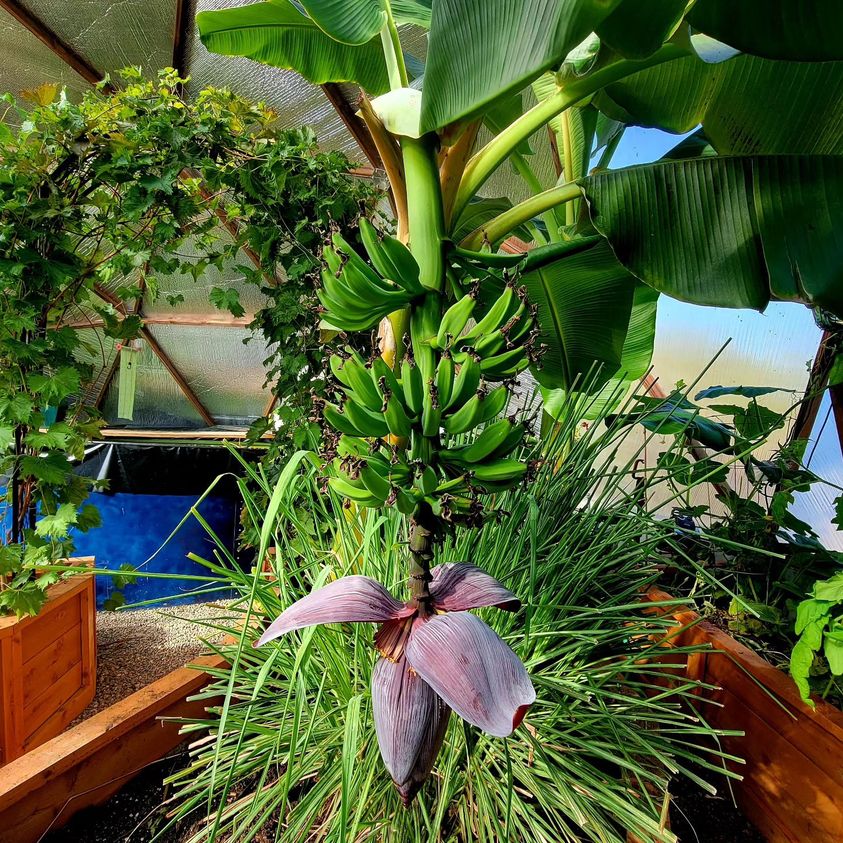
Jump to: Growing Bananas, Ideal Conditions For Growing Bananas, Where to Grow Bananas in Your Dome, Planting Banana Plants, Growing Banana Companion Plants, Caring for Banana Plants, How to Manage Pests, Growing Bananas Year Round, When to Harvest Bananas, Banana History and Trivia, Health Benefits of Bananas
- Genus Name: Musa spp. Common Name: Banana Type: Herb, Fruit Height: 2-30 feet tall Width: 1-15 feet wide Zone: 9-11
Often called a tree, the banana is actually an herbaceous plant as it does not have a woody stem. Banana is in the Musaceae family and is more closely related to cardamom and ginger than to any types of palms. You are going to love growing bananas!
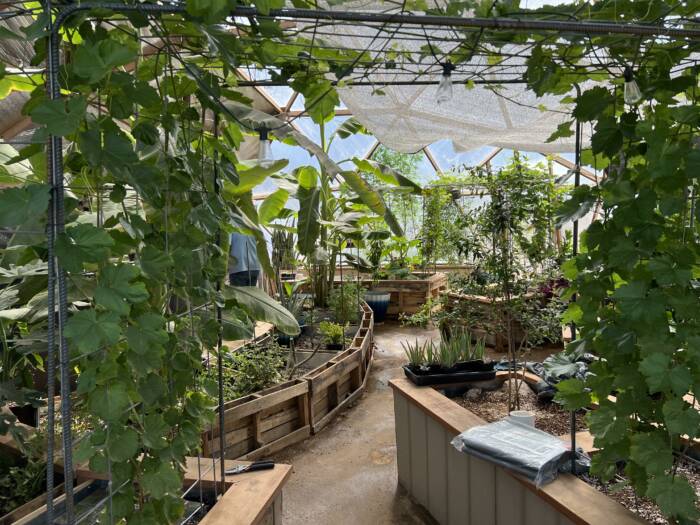
Growing Bananas!
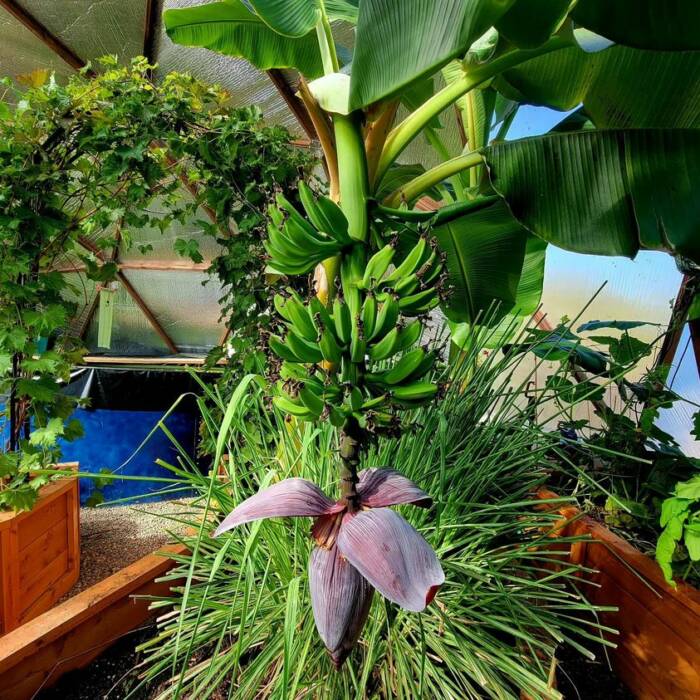
We know many of you go bananas over bananas and growing them IS possible in your dome! Bananas grow quickly in tropical and subtropical regions where there is a hot and humid climate. Banana flowers will typically appear in about six months. The purple petals will start to curl up and drop off, revealing your bananas.
While you may have noticed those little black “seeds” in your store bought bananas, they are immature and will not grow a banana plant. Commercial bananas are mainly the Cavendish variety, grown from rhizomes (horizontal plant stems). Most of our current day varieties of bananas are now seedless. If you are determined to grow bananas from seeds be aware it is challenging as they will require very precise tropical conditions!
You can take a banana rhizome, called a banana pup, and grow a new banana plant via that method. Propagate new banana plants by separating the suckers from the parent plant. There are usually multiple pups growing from the parent, but it’s best to leave at least one as the plant will only produce fruit for one season. Banana plants can live for six years although each stem only produces fruit once and then dies. The plant will continue to produce new stems from the rhizome for your next bunch of fruit.
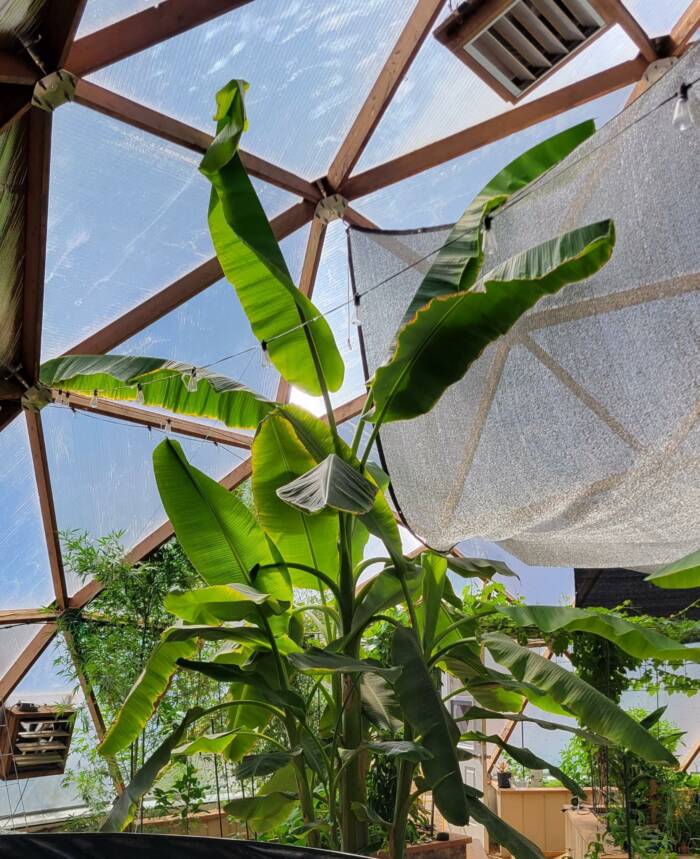
Ideal Conditions for Growing Bananas
Most banana varieties prefer full sun and grow best in USDA Zones 9-11, however there are banana plants that can scorch easily and like partial shade. You can keep your banana plant happy in your greenhouse by providing a warm, humid climate with at least 6 hours of direct sunlight. Did you know that there are hundreds of varieties of bananas? Dwarf varieties are popular for smaller gardens and the red varieties are a beautiful addition to your garden or greenhouse.
Where to a Grow Bananas in Your Dome
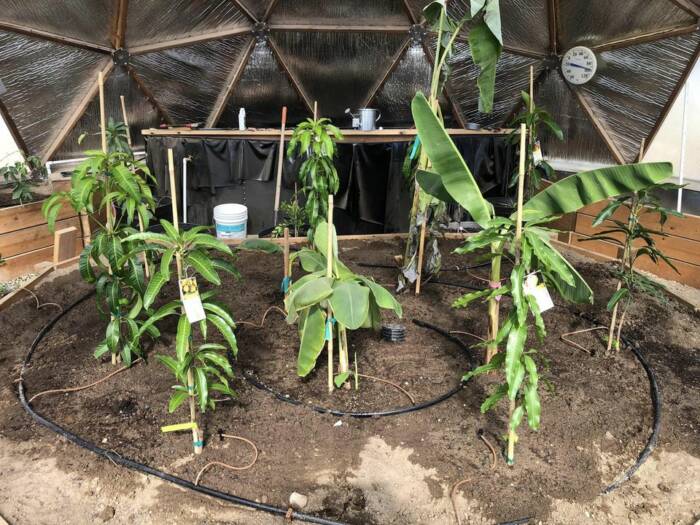
Banana is a tropical plant so it will need to be in the warmest area of your dome. Typically that is the center bed and close to the above ground pond, which also acts as your thermal mass, providing heat in the winter.
Banana plants also need a minimum of 6 hours of sunlight per day, but 8-10 hours of full sun is better. Planting your banana in the center also allows room for banana plants to reach their full height although there are banana plant varieties that come in varying heights to fit your greenhouse.
Planting Banana Plants
If you live in a cold region, planting any tropical plant will depend on one major decision: will you heat your Growing Dome or not? However, if you will not be heating your dome greenhouse then planting a banana plant may not be wise. For those who plan on heating their dome then the banana plant will be happiest where it will get the most sun and has room to grow both tall and wide.

Dig a hole that is deep and wide enough so the soil around the plant will be loose. This allows the banana roots to grow into the soil easily which also helps stabilize the banana as it grows tall. Mix compost and manure in with the soil from the newly dug hole until it is about a 50/50 mix. Plant your banana plant so the top of the soil in the pot is either level or slightly above the raised bed.
Be sure to add a combination of trimmed banana leaves, fertilizer, and hard mulch frequently during the growing season so they have the necessary nutrients to grow and remain healthy. This also helps prevent weeds and keeps the soil moist. A soil pH between 5.5 to 7 will help your banana plant to grow healthy.
Banana plants like rich, dark soil so be sure to add a lot of compost. They also need quite a bit of nitrogen and potassium…chicken manure is a good option. Another option for hungry banana plants is to plant them in a banana circle. This is a permaculture method which allows them to thrive as they would in the wild. If you only want to plant one banana plant, be sure it’s neighbors like a lot of water.
Growing Banana Companion Plants
Banana plants are best grown in a banana circle, as mentioned earlier. They like to have a circle of friends…companions! The following plants are great companions for your banana plant: sweet potatoes, comfrey, taro and lemongrass.
- Sweet potatoes provide ground cover for the soil which also helps retain moisture and since they are a vine they can grow up the banana plant.
- Comfrey grows well in the shade provided by banana plants and contributes minerals and nutrients to the soil that your very hungry banana plant will devour!
- Plant taro, a root vegetable, to provide ground cover to prevent the soil from drying out and weeds from taking root.
- Lemongrass is a culinary herb that is wonderful to have growing in your greenhouse. It’s also a natural pest and weed deterrent.
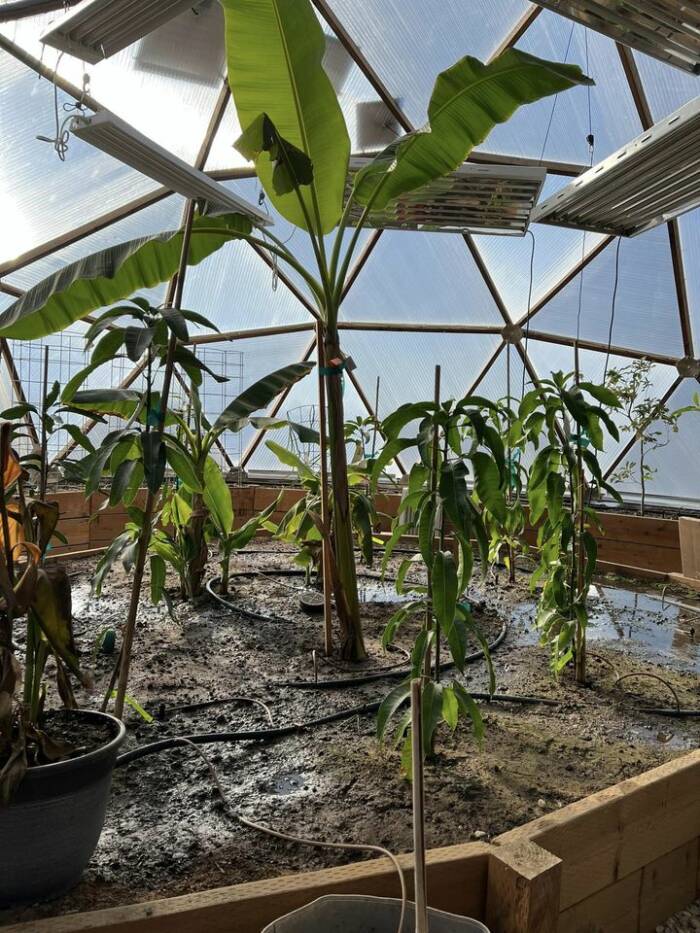
Caring for Banana Plants
Banana plants need rich, well drained soil. Water deeply and regularly, but do not overwater your banana plant or let the soil become waterlogged as that can cause root rot. As tropical and subtropical plants, bananas also need humidity so consider installing a misting system for your banana plant or add a humidifier in your greenhouse near your tropical plants.
Bananas need fertilizing throughout the growing season due to the fact they have voracious appetites! Commercial fertilizer is one option and using compost and mulch is another option. Basically you want your banana plants to have a very rich soil throughout the growing season and you want to mix compost in annually to build up your soil.
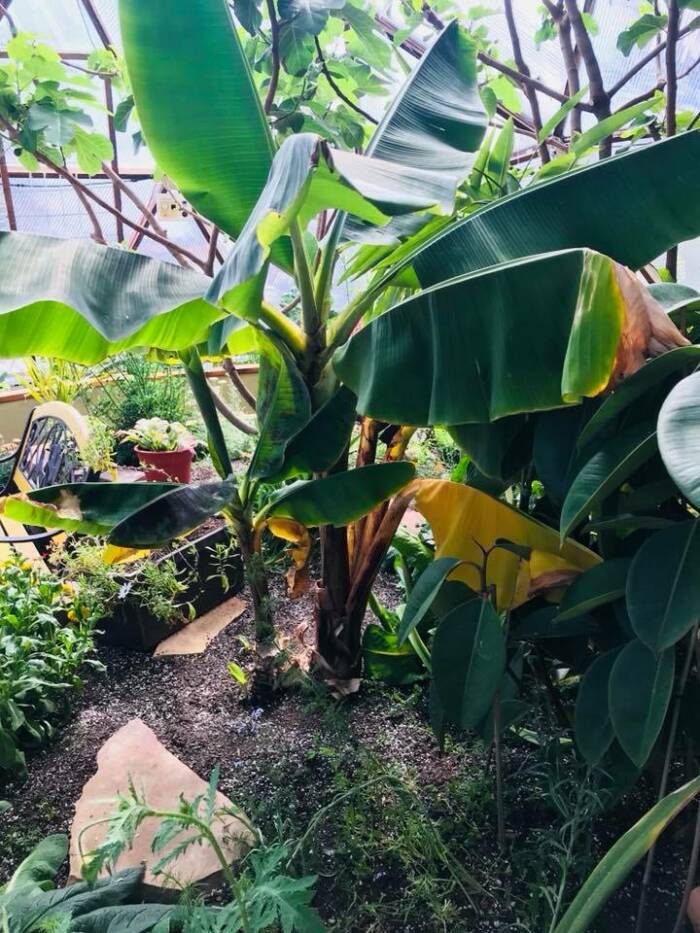
How to Manage Pests
Banana plants can be attractive to pests so keep an eye out for snails, spider mites and aphids. Since banana plants require frequent watering, use a hose to shoot pests off with a jet of water or use an organic pesticide.
Growing Bananas Year Round
As a tropical plant, bananas require a tropical environment, just like guava. If you live in a colder climate, you will most likely need to heat your dome to grow tropical plants.
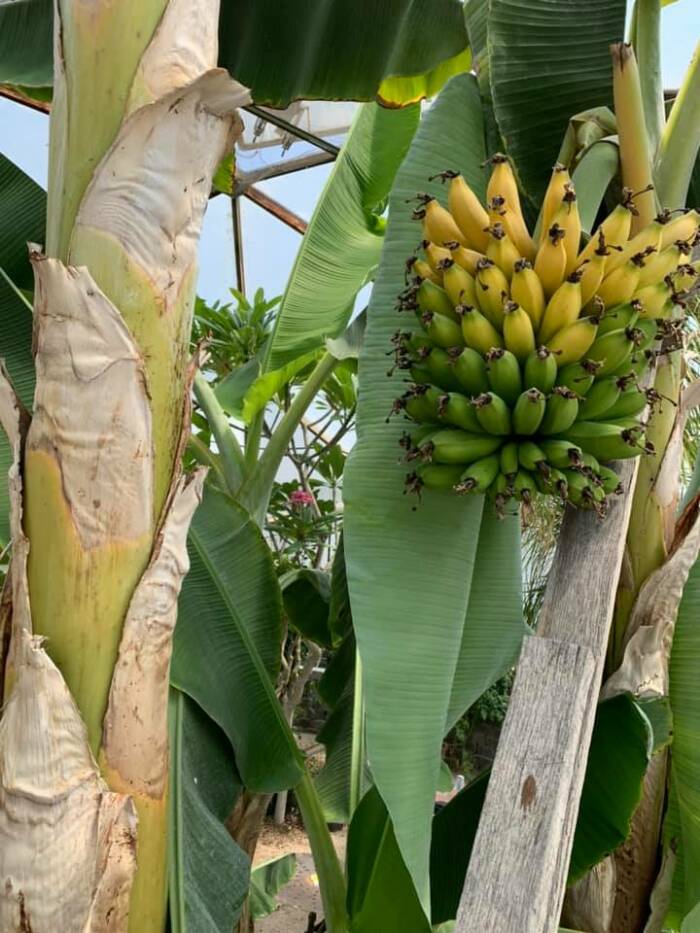
When and How to Harvest Bananas
Cutting banana plants to harvest them is a very messy job and the plant sap will stain your clothes so dress appropriately! Well-rounded bananas with ribs are ready for harvest, especially when the flowers can be rubbed off. Or harvest them green and bring them inside to finish ripening. They are sweetest if left on the plant, but then will ripen all at once! It is also possible to peel and freeze bananas for later use if you have too many to eat.
History of Growing Bananas and Some “Apeeling” Trivia
Wild bananas were domesticated around 8000 BCE in Southeast Asia. According to Encyclopedia Britannica banana consumption is mentioned in early Greek writings as well as Latin and Arab writings. Alexander the Great tasted a banana for the first time in 327 BC when he invaded India and promptly introduced it to the Western world. The bananas we know and love today are actually a cross-breeding of Musa Acuminata and Musa Balbisiana. The result made the banana seedless and more desirable than the original harder fruit.
Did you know…
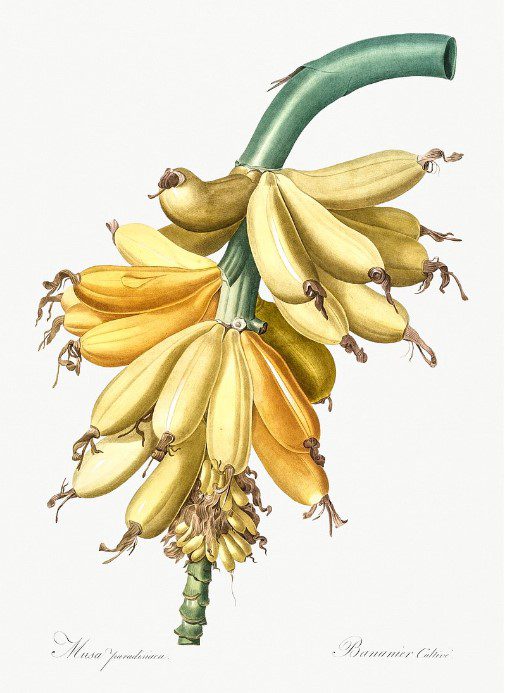
- A cluster of bananas is called a “hand” while one banana is called a “finger”. The word banana is derived from the Arabic word banan, which means finger.
- The banana plant is not a tree, but is actually an herb! Bananas are the largest plant on earth that do not have a woody stem.
- A banana is a berry? That’s because berries are fruits that come from one flower and have several seeds.
- Banana peels have many uses: healing bruises, polishing leather shoes, and to help eliminate swelling and itching from bug bites!
- Considered sacred in India, banana flowers are fastened to headbands for good luck. As bananas symbolize fertility, family and friends place banana leaves on the doorstep of newlyweds.
- And why are bananas never lonely? Because they hang around in bunches!
- The banana was first introduced in the United States in 1876 at the Philadelphia Centennial Exhibition where they were wrapped in foil and sold for 10 cents each.
- Banana plant fiber is useful to weave baskets, place mats, hats and bags as well as making twine and string.
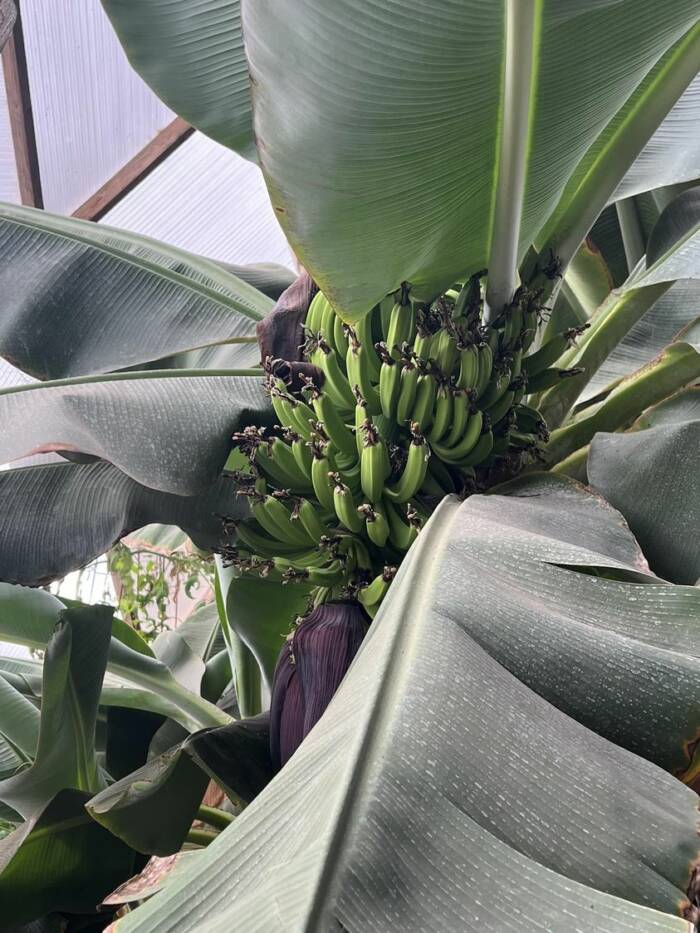
Health Benefits of Bananas
Bananas are a favorite snack not only because they taste good, but they are a great source of Vitamin C, B6, potassium, magnesium and fiber. Bananas are popular in smoothies, on top of cereal, and in fruit salad. If they get overly ripe you can make banana bread or muffins! They have a wide variety of uses and they are not messy unless you squish them. Bananas are also a great egg subsitute in cooking and baking!
We hope you found this article “apeeling” and enjoyed learning about going bana…um, we mean growing bananas. Happy gardening!
